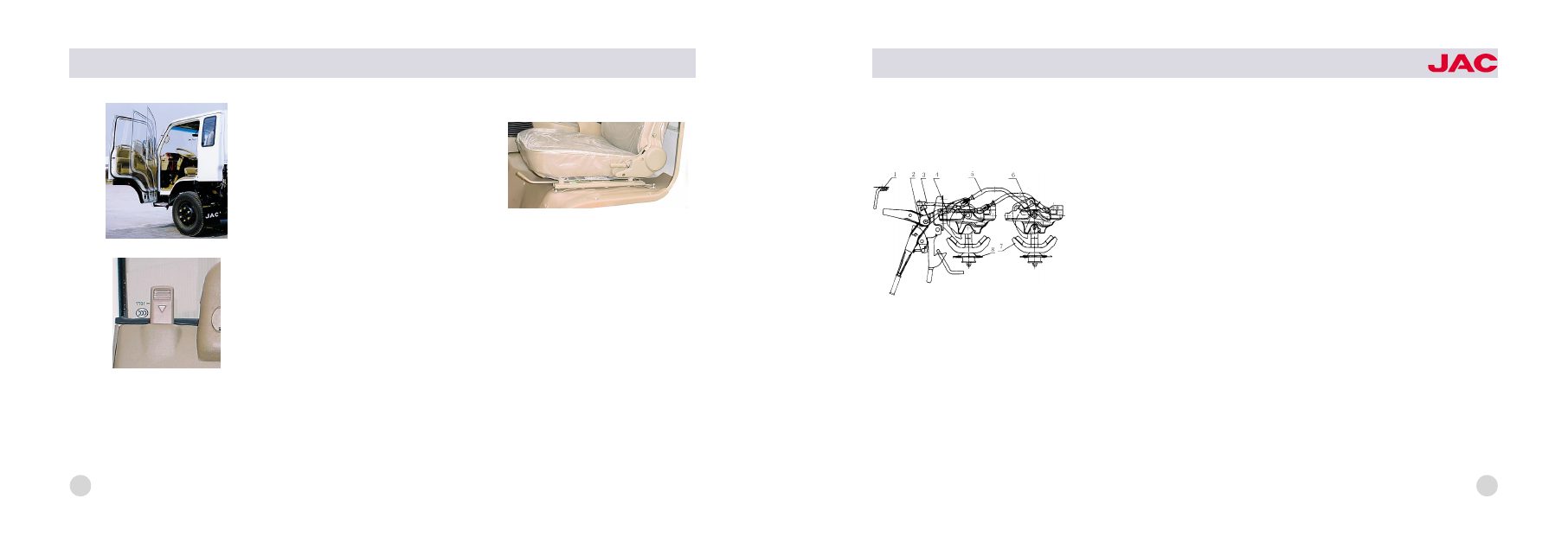Content .. 1291 1292 1293 1294 ..
Isuzu N-Series. Service manual - part 1293

3. The door can be locked outside
without the key. First press down the
lock button (figure in the above
page) at the inner side of the door to
the fixed position, then pull the out鄄
side door handle outwards and at
the same time close the door.
4. Pull out the inside door handle,
and the door can be open. After
closing the door, the door can be
locked if the lock button is pressed
down.
Cab seat
Cab seat can be classified as driver
seat尧 assistant driver seat and rear
row seat. Driver back seat adopts
upright seat. The angle of backrest
and the fore-and-aft position of seat
can be adjusted. The maximum ad鄄
justable angle of the backrest is 56毅.
The maximum adjustable distance of
the seat is 160 mm. The seat adjust
system is shown in the right figure.
seat adjuster system
When vehicle is in the progress of
maintenance, please clean the track
assembly of the driver seat, recoat
the lithium base grease, and tighten
all joint nuts again. If find that the
cab track slide seat is shaking or
block because of the distortion, it
should be repaired or replaced with
components.
High quality safety belts have been
equipped to the seat in this series
truck, please tie the belt without fail
lock button
three-step opening door
8
seat adjuster system
HFC1020
series trucks
when you are driving or riding the ve鄄
hicle.
Cab tilt lock mechanism
Brief description of the structure
This series truck has two configura鄄
tions: tilting cab and make it cannot
tilt. According to the latter configura鄄
tion, the cab cannot tilt, so it does
not have cab tilt lock mechanism. In
order to improve the riding comfort,
the linkage between cab and vehicle
frame is flexible.
To the tilt cab, there are tilt and
locking mechanisms. Tilt mechanism
is composed of torsion bar尧support
axle tube assembly尧left and right
brackets in the foreside and rear
support rod assembly in the cab.
The tilting of cab is achieved with
torsion. The locking mechanism is
composed of left and right locking
mechanism assemblies尧 tilt locking
mechanism assembly尧 short pull
rod尧 long pull rod尧 rear support
bracket assembly in the cab and
rubber pad assembly of rear bracket.
It has triplication locking function
which are self locking of left尧 right
locking mechanism尧 lock of tilt lock鄄
ing mechanism assembly and lock of
safety lock hook. Its purpose is lock鄄
ing the cab reliably and make sure
that the cab can not tilt automatically
when the vehicle is running. The tilt
lock mechanism is shown in the fig鄄
ure on the above page.
Please read the tilting notes on the
left door of the cab and on the upper
flange of the wheel seriously before
tilting the cab. The notes are shown
in the below figure.
1尧handle; 2尧tilt locking mechanism;
3尧short pull rod;4尧left locking mec-hanism;
5尧long pull rod;
6尧right locking mechanism;
7尧cab rear support;
8尧rubber pad of cab rear support
schematic diagram of
cab tilt locking device
9